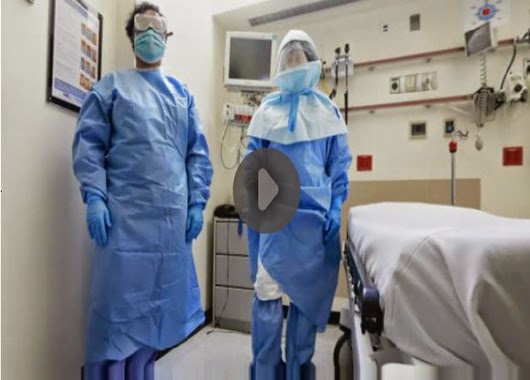Unmanned NASA-contracted rocket explodes over eastern Virginia
(CNN) -- An unmanned NASA-contracted rocket exploded
in midair early Tuesday evening, producing huge flames and loud booms
along the eastern Virginia coast but no injuries or deaths.
Orbital Sciences Corp.'s
Antares rocket and Cygnus cargo spacecraft had been set to launch at
6:22 p.m. ET from the Wallops Flight Facility along the Atlantic Ocean,
carrying roughly 5,000 pounds of supplies and experiments to the
International Space Station.
What was left of the spacecraft and rocket plummeted back to Earth, causing even more flames upon impact.
The rocket and spacecraft
-- which together cost more than $200 million, according to Frank
Culbertson, the general manager of Orbital's Advanced Programs Group --
are gone. And there's obvious damage beyond that, including to the
launchpad, though the night skies made it hard to immediately gauge how
much.
One thing officials do
know is that rocket science is, in the words of NASA Administrator Bill
Gerstenmaier, "a really tough business."
"Tonight's events really
show the difficulty that it takes for us to do this task of delivering
cargo to the space station," he said.
Witnesses: From 'breathtaking' to horrific
The Orbital rocket had
been set to go up Monday, only to be scrubbed "because of a boat down
range in the trajectory Antares would have flown had it lifted off,"
according to NASA. Coast Guard spokesman David Weydert said the boat
that triggered the postponement was 40 miles offshore.
Tuesday, by contrast,
seemed perfect. Just before liftoff, NASA reported "100% favorable"
weather and "no technical concerns with the rocket or spacecraft being
worked."
It seemed to be going perfectly when Ed Encina saw the launch brighten up the sky from his vantage point about 3 miles away.
"And then, all of a sudden, you see a big fireball," said Encina, a Baltimore Sun reporter.
Encina recalled a loud
boom that caused "your feet (to) shake a little bit," as well as flames
enveloping a roughly 100-yard area around the launchpad in a marshy area
with brush.
CNN iReporter Dymetria Sellers,
who watched from a drawbridge because the NASA visitors station was
ful, recalled a "breathtakingly beautiful" sight when the rocket
ascended, followed by mass confusion as flames lit up the early
nighttime sky moments later.
"About 30 seconds later, we could hear and feel two booms reach us, and it was apparent the rocket had exploded," she said.
Mark Kelly, a former NASA astronaut, said such a colossal fire was to be expected.
"It takes a lot of
propellant to take a spacecraft of that size moving 25 times the speed
of sound," Kelly told CNN, explaining how fast the rocket should have
gone on its way to the space station. "So when it fails, it's usually
pretty catastrophic."
Authorities said the safety parameters appear to have worked, and noted the lack of casualties.
"All we lost was hardware," Culbertson said. "That hardware, however, is very important."
NASA official: 'We'll fix it'
So what happened?
That's exactly what
officials -- both from public agencies like NASA and private companies
like Orbital -- hope to find out in the coming days and weeks.
"What we know so far is
pretty much what everybody saw on the video," Culbertson said. "The
ascent stopped, there was some, let's say disassembly, of the first
stage, and then it fell to Earth. ... We don't really have any early
indications of exactly what might have failed, and we need some time to
look at that."
Orbital will lead the investigation, along with the Federal Aviation Administration, with NASA assisting.
Among other things,
they'll try to collect and examine any debris that can be recovered,
review data from the spacecraft before its destruction and look at
videos around the launch time.
The main focus Tuesday
night was safety. Bill Wrobel, the Wallops Flight Facility director,
said fire crews had set up a perimeter around the affected area. "We're
just basically letting the fire burn out, but they are contained," he
added.
Authorities expressed
confidence that no people were directly affected by the explosion, but
they could come across scattered remnants that are possibly floating in
the water.
As to when Orbital will
fly again from Wallops, the only site it's now permitted to launch from,
Culbertson didn't specify a timetable beyond saying, "We will fly again
as soon as we can safely."
Gerstenmaier offered a similar take: "We'll figure out what the failure is, we'll fix it, and we'll learn from it."
2 missions set to resupply space station
In the meantime, they'll have to rebound from the loss.
A third of the
spacecraft's cargo was material for scientific investigations such as a
Houston school's experiment on pea growth and a study on blood flow in
space.
There also were basic
supplies meant for the crew of the space station -- now orbiting more
than 200 miles above Earth -- including more than 1,300 pounds of food.
But in the short term, no one is saying the space station's six-person crew will go hungry.
NASA won't directly
restock them, having relied on private companies to do so since the end
of its space shuttle program. That includes Virginia-based Orbital,
which had its first of eight planned ISS launches in January out of the
Wallops facility as part of its $1.9 billion contract with NASA.
If Orbital can't
resupply the space station, others can. On Wednesday, for instance, a
Russian Soyuz resupply spacecraft stocked with cargo and crew supplies
is set to launch from Kazakhstan. SpaceX, another private company, plans
its fifth mission in December, including more supplies and a laser
instrument to measure pollution, dust and other aspects of the
atmosphere, according to NASA.
Even if those missions somehow fail, the space station crew has enough on hand to last well into next year.
"The station is in great shape; the crew is in good shape," said Mike Suffredini, NASA's ISS manager.











